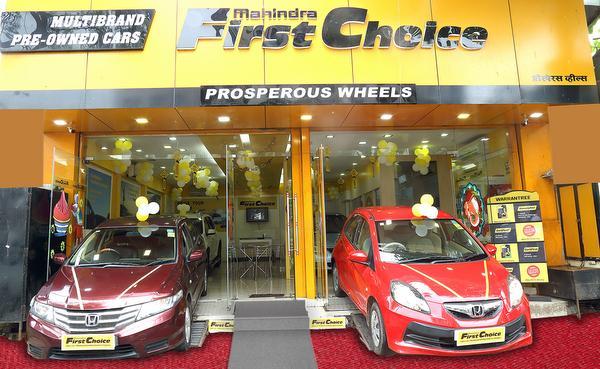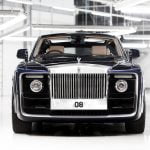
Cox Automotive believes the country will be among the top four markets by 2020
Rob Huting has this interesting update about China’s used car market.
“Till about five years ago, buying used cars in the Chinese market had a stigma since it meant you could not afford to buy a new car,” says the Senior Director, Corporate Development, Cox Automotive. “However, with more younger people coming in, driving an used BMW or Audi seems perfectly acceptable.”
Sure, this behavioural pattern may be more visible beyond Shanghai and Beijing but it is still a significant transition in the world’s largest automobile market. It is precisely for the same reason that Huting and his colleague, Eric Jacobs, Senior VP, Corporate Development, are extremely upbeat about India’s used car business where their US-based company is a strategic investor in Mahindra First Choice Wheels.
Great oppurtunity
“In India, the ratio for new to used cars is 1:1.1 while China it is 1:0.5 but over time, we expect most of these markets to will be 1:2 or 1:3 as in the US,” says Huting. This will happen when people trade their cars more aggressively as the car parc grows.
Cox Automotive believes this will increase to 1:1.2, which would then become a “great opportunity” for Mahindra First Choice. “It is my first visit to India and it has been spectacular here. The number of cars and people mean it is a huge opportunity for us,” says Jacobs.
Nagendra Palle, CEO & MD of Mahindra First Choice, then rattles off some statistics. Last year, the used car pie in India was 3.3 million to 2.8 million used cars. “We expect the market to be 7-8 million used cars over the next 5-7 years while new cars may be 4.5 million,” he says. Effectively, this translates into a 1:1.4 for new versus used cars and will only grow from there.
Potential market
Both Huting and Jacobs believe India offers a lot of potential here in the long haul. They admit that the pace of change may not be as quick as China’s given the structure of a democracy where things can take time. “India is probably one of the top six used car markets in the world with three million units and will be the top four by 2020 after the US, China and Brazil,” says Huting.
Again, as in the case of China, the Cox Automotive duo knows only too well that smaller cities and towns are the real engines of growth for used cars. “You drive around Mumbai and wonder how you can get more cars into the city and it is perhaps not here,” says Jacobs. “This is the sort of thing we see in Shanghai and Beijing as well where the true potential is Tier 2/3/4 cities and more rural areas.”
In the case of Mahindra First Choice, nearly 60 per cent of its customers are first time car buyers. “The key is to give the customer comfort and convenience of the brand and this is where we focus on strongly,” says Palle. The brand is present in over 600 cities and towns and is seeing tremendous customer traction in regions like the east and North-East, which are traditionally not strong car markets.
“Youngsters are making a beeline for used cars as they have huge aspirations,” he adds.
As seen in China, it is clear that India’s GenNext is not averse to the idea of an used car. Compare this to another emerging market, Brazil, which has four used cars to one new car and 10 million used cars in all. Its auto industry is a “lot more mature” while its used car market “looks a lot like the US with larger independent dealers”.
According to Huting, Brazil’s used car numbers have been flat at 10 million units over the last five years while its new car market went down from 3.8 million to 2.1 million units. This, adds Jacobs, was similar in the US too when new car sales crashed after the 2008 crisis from 16 million to 10 million units while used cars stayed at 16 million units “pretty consistently”. Markets mature over time and India is “still very nascent” in used cars, which is equally true for China despite its larger volumes. “In China and India, the new car dealers are not very much in the used car business, which is much more disorganised rather than the way Mahindra First Choice is developing this model,” says Huting.
Family affair
The Cox Automotive team believes it is important to create opportunities in India but also appreciates the fact that it cannot “force the market” to change overnight. “What we need to do is have a certain amount of long term patience and see how the market changes over time,” says Jacobs. “Cox is a family company like Mahindra where we do not see things on a quarter by quarter basis.”
On the subject of family, Huting has an interesting story to narrate during his recent visit to India. “We checked out with a dealer in Mumbai how long does it take for someone to buy a car. We expected him to say 2-3 hours but the answer was three visits,” he exclaims.
Typically, the individual would come alone the first time, accompanied by his wife during the next visit and then with the entire family when paying up the cheque. It was a reminder that buying a car in India, be it new or used, is as important as a home where everyone in the family is involved in the decision.
No wonder then that Mahindra First Choice is pulling out all stops to make the experience of buying used cars comfortable at its outlets. “One of the first things we want to do is to bring more transparency into the system, which helps everyone over time,” says Jacobs.
[“Source-ndtv”]





